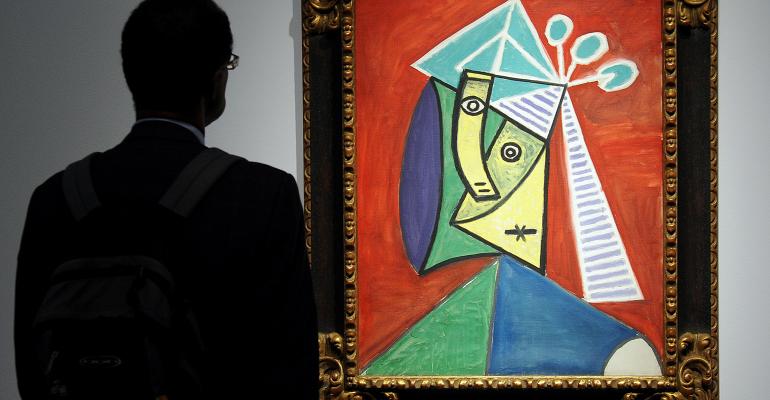Investors currently looking for opportunities to protect themselves against global equity market volatility, tanking cryptocurrencies, record supply-driven inflation and geopolitical risk may find that blue-chip fine art is the answer.
Historically, art has repeatedly proven to be an excellent investment opportunity, having outperformed the S&P 500 since 2000. This past May, the three largest auction houses in New York saw a record breaking $2.8 billion, including historic sales for artists such as Andy Warhol, Jean-Michel Basquiat and Yayoi Kusama.
The tremendous May auction results demonstrate art’s, particularly contemporary art, continued rise in importance in the global economy. Citibank reports contemporary art has returned 14% versus a 9.5% annual return for the S&P 500 over the last 25 years. There are a number of reasons why art performs well despite adverse global market conditions. A recent Bloomberg article noted that “there are few true inflation hedges…But art can serve as an inflation hedge in almost any environment.” In an interview with MarketWatch, Guggenheim Partners Global Chief Investment Officer Scott Minerd said that if he was given $10,000 and a five-year investing horizon, he would rather put the money to work in real estate or fine art than in equities. Lower minimums, such as the ones offered by fractionalized investing, can allow retail investors to build a portfolio of art works just like a high-end art collector would.
Yieldstreet’s Art Investment team believes that diversification is a key investment principle for any successful art fund; as with any investment, diversification can reduce concentration risk. Investing in a portfolio of artworks by different artists, genres and periods allows diversification not just from public markets, but also within art as an asset class. As Sotheby’s Head of Private Sales (America’s), Courtney Kremers says:
"Diversification is really one of the core principles of investing and the same applies for art investing. Artists or genres can fall in and out of favor and their markets are definitely impacted by those changes. When you’re invested in a single artist or a single artwork, if the market for that specific artist or genre goes out of style, you have 100% exposure to that depreciation in value. So experienced art collectors buy artworks by a variety of different artists.”
In addition to sourcing a diverse portfolio of artworks, acquiring exceptional examples of an artist’s most iconic imagery, from the most important period of their career, is another way to optimize investment returns because the highest quality works are most likely to achieve the highest prices when it’s time to resell. It is also important to focus on artists with strong markets and career trajectories. Particularly for mid-career and emerging artists, backing by top galleries and museums is important and potentially reduces downside risk because “these institutions are also very invested in maintaining momentum for these markets and keeping these markets strong,” maintains Sotheby’s Courtney Kremers.
For an art investment manager, both independence and expertise are important: it would not be appropriate to have an expert in Impressionist art appraise a Contemporary artwork or vice versa. Yieldsteet, for instance, engages independent, specialized third-party appraisers and experienced museum conservators to evaluate each artworks’ condition and value. Guided by these appraisals, Yieldstreet purchases all artworks at or below fair market value.
Art investment funds do face unique challenges, however. For example, Yieldstreet does not disclose images of the artworks in the Art Equity Funds or the acquisition prices. Provenance, or the history of an artwork’s ownership, has a direct impact on value. While ownership by a celebrity or celebrated collector can be accretive, if a work of art is known to have been owned by an investment fund, that could negatively impact its future resale value. That said, it's imperative to provide investors with as much information as possible about each artist’s history and market performance, so investors can make educated, informed decisions.
Art is a true asset class, and one that is finally available to retail investors. Although collecting blue-chip artworks remains prohibitively expensive, investors now have real options to participate in a market that was previously reserved for the ultra-rich. Through platforms like Yieldstreet, investors can gain access to portfolios of blue-chip artworks, affording them the opportunity to be part of a market that was, until recently, totally inaccessible.
Rebecca Fine is Managing Director and Head of Art Investments at Yieldstreet.





